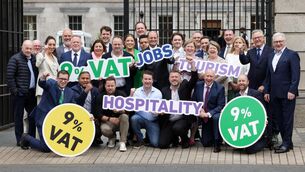Ireland is Europe's most expensive country for non-alcoholic drinks while food prices 12% above EU average

Ireland is the most expensive country in Europe for non-alcoholic beverages and for cigarettes, figures from the CSO reveal. Picture: Denis Minihane.
Ireland is the most expensive country in Europe for non-alcoholic beverages and for cigarettes, figures from the CSO reveal.
The survey of price levels of food, beverages, and tobacco covered 36 European countries in 2024. It showed that Ireland was the most expensive for non-alcoholic beverages, with prices 40% higher than the EU average. Non-alcoholic beverages included coffee, tea, cocoa, mineral waters, soft drinks, concentrates, fruit juices, and vegetable juices.
Ireland was the second most expensive country in both the eurozone and EU27 for alcoholic beverages, with prices of alcohol in Ireland just under double the EU27 average in 2024. Of the 36 countries surveyed, Iceland had the highest prices of alcohol, at 185% above the EU27 average. Alcoholic Beverages were cheapest in Italy, at 16% below the EU27 average.
Tobacco prices in Ireland were the most expensive of the 36 countries surveyed in 2024, at 159% higher than the EU27 average.
Food prices in Ireland were 12% above the EU27 average in 2024, making them the second most expensive in the eurozone, and third most expensive in the EU27. "Looking at specific food categories, we can see that except for meat, prices for the various types of foods in Ireland were all higher than the EU27 average in 2024," said CSO senior statistician in the prices division Edel Flannery. "Prices for breads and cereals were 17% higher than the EU27 average, while milk, cheese and eggs were 11% higher, fruits, vegetables and potatoes were 9% higher, oils and fats were 6% higher, and fish prices were 5% higher."
Each of the 36 countries collected prices for as many items as possible. Eurostat then combined the results to create the price level indices, which provide a comparison of countries' price levels in 2024 with respect to the EU27 average.











